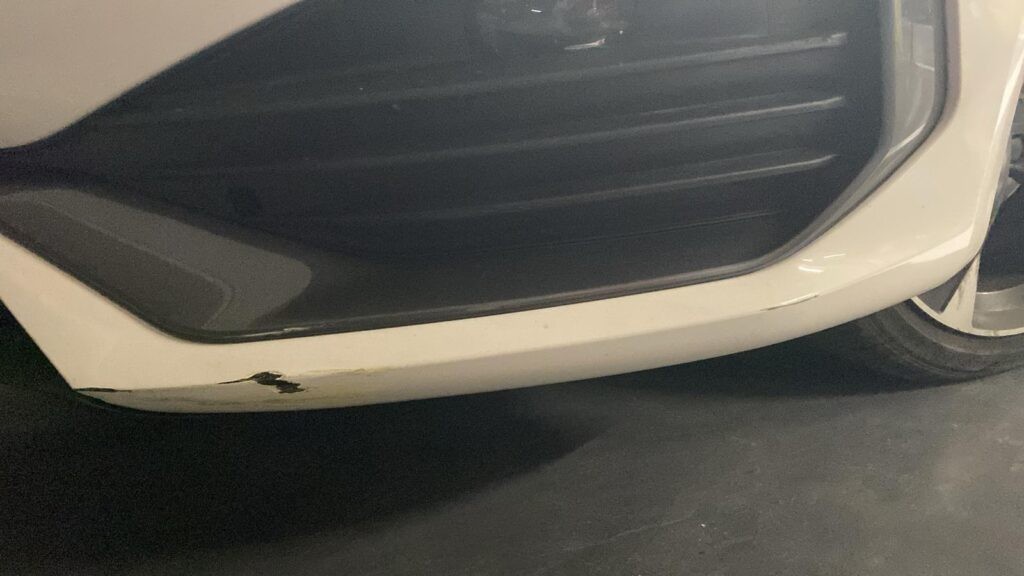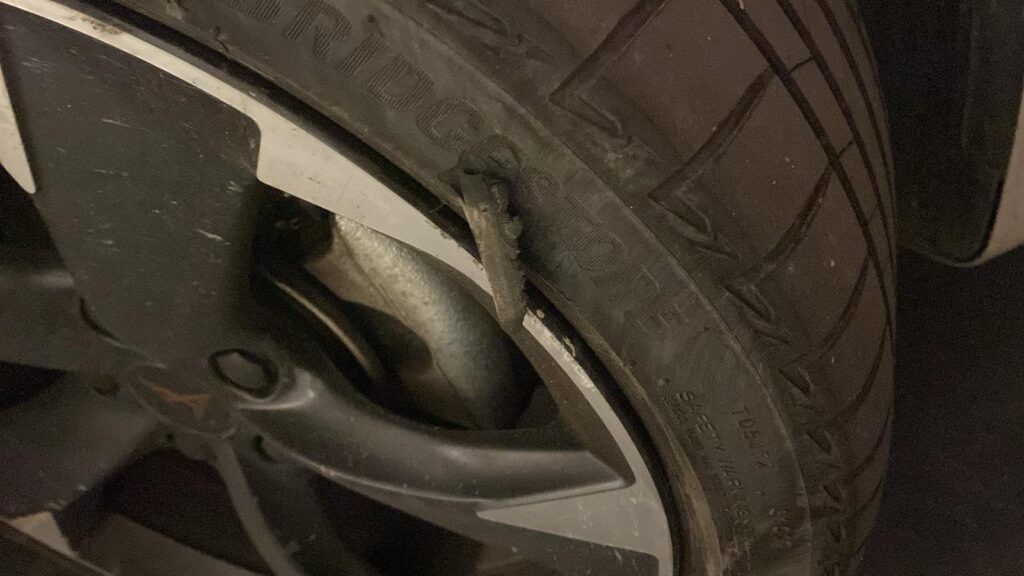Renting a car offers freedom and convenience, but it also comes with responsibilities, especially concerning vehicle condition. Understanding what happens if your rental car gets damaged and whether you can repair it yourself is crucial to avoid unexpected charges and complications. Many renters wonder, “Is it illegal to repair a rental car if I cause damage?”. While “illegal” might be a strong word, undertaking repairs on a rental vehicle without authorization is a definite breach of contract and can lead to significant financial and contractual repercussions. This article delves into the intricacies of rental car damage, repair policies, and why DIY fixes are almost always a bad idea.
Understanding Your Rental Agreement: The Repair Clause
When you sign a rental agreement, you’re not just agreeing to pay for the car; you’re also agreeing to abide by the rental company’s terms and conditions. Buried within this legal document are clauses pertaining to damage and repairs. Typically, these agreements explicitly state that you are not authorized to carry out any repairs on the rental vehicle. This stipulation is in place for several key reasons:
- Quality Control: Rental companies have established procedures and standards for vehicle maintenance and repair. They need to ensure repairs are carried out by qualified professionals using appropriate parts to maintain vehicle safety and value. Unauthorized repairs might compromise these standards.
- Insurance and Liability: Rental companies have insurance policies covering their fleet. Unauthorized repairs can complicate insurance claims and liability issues in case of accidents or further damage. If a DIY repair fails and causes an accident, you could be held liable.
- Damage Assessment: Rental companies have their own processes for assessing damage upon vehicle return. Unauthorized repairs can interfere with this process, making it difficult to determine the original extent of damage and potentially leading to disputes.
Why DIY Repairs Are a Bad Idea
Even if you are skilled in auto repair, attempting to fix damage to a rental car yourself is generally inadvisable. Here’s why:
- Violation of Contract: As mentioned, your rental agreement likely prohibits unauthorized repairs. Breaching this agreement can result in penalties, extra charges, and even voiding any damage waivers or insurance you’ve purchased through the rental company.
- Potential for Further Damage: Improper repairs can worsen the initial damage or create new problems. For example, using the wrong type of paint or adhesive could lead to further cosmetic or structural issues.
- Disputes and Extra Charges: Rental companies are likely to notice unauthorized repairs upon vehicle return. They may dispute the quality of the repair, claim it’s insufficient, or even argue that your repair attempts caused additional damage. This can lead to inflated repair bills and lengthy disputes.
- Loss of Coverage: If you have purchased a Collision Damage Waiver (CDW) or Loss Damage Waiver (LDW), attempting unauthorized repairs could void this coverage. You would then be fully liable for the original damage and any issues arising from your repair attempts.
What to Do If Your Rental Car Is Damaged
Instead of considering DIY repairs, here’s the correct procedure to follow if your rental car sustains damage:
- Document the Damage: Immediately after the incident, thoroughly document the damage. Take clear, time-stamped photographs from various angles. Note the location, size, and nature of the damage.
- Report to the Rental Company: Contact the rental company as soon as possible to report the damage. Follow their specific procedures for reporting incidents, which may involve filling out an accident report form.
- Exchange Information (If Applicable): If the damage was caused by another party (e.g., in a collision), exchange insurance and contact information with the other driver, just as you would in your own vehicle.
- Cooperate with the Rental Company: Work with the rental company during their damage assessment process. Provide them with all the documentation you’ve collected and answer their questions truthfully.
- Understand Your Liability: Review your rental agreement and insurance coverage to understand your financial responsibilities for the damage. If you have purchased CDW/LDW or have third-party rental car insurance, initiate the claims process as per your policy.
Acceptable Wear and Tear vs. Damage
It’s important to distinguish between normal wear and tear and actual damage. Rental companies recognize that vehicles experience some wear during normal use. Acceptable wear and tear generally includes minor scratches, small dents (within specified limits), and stone chips that don’t significantly affect the vehicle’s appearance or functionality.
Damage, on the other hand, is anything beyond normal wear and tear that impairs the vehicle’s condition or value. This includes larger dents, deep scratches that penetrate the paint, broken lights, tire damage due to misuse, and interior damage like stains or tears.
Refer to the table below for examples of acceptable and unacceptable conditions, as defined by typical rental company guidelines:
| ### Fair Wear and Tear includes: | ### Fair Wear and Tear excludes: |
|---|---|
| Dents | |
| Dents up to 25mm in diameter (excluding bonnets and roofs) where the paint surface remains intact with no paint removal, cracking, or flaking. | – Hail damage. – Dents of any size on bonnets, roofs, wheel arches, style lines, door sills, or door edges. – Multiple dents within a localized area, regardless of size. – Any damage that affects or penetrates the paintwork. |
| Stone chips | |
| Isolated stone chips on any panel up to 2mm in diameter. | More than 5 stone chips to an isolated area |
| Scratches | |
| Scratches up to 25mm in length and 1mm wide, provided there is no paint penetration and they can be polished out. | Scratches exposing the metal, plastic, or undercoat. |
| Bumpers | |
| Scratches or scrapes beneath the front bumper that are not visible from 2 meters away. Light scuffing or scratches that: – Do not penetrate the paint. – Can be polished out. – Include isolated stone chips up to 2mm in diameter. | – Scratches with broken paint. – Multiple scratches of any size. – Dents 25mm or larger in diameter. – Damage to textured bumpers. – More than five stone chips in a localized area. |
| Wheels, wheel trims, tyres | |
| Light scratches and scuffing up to 20mm in length | – Cracked, broken, missing, buckled, gouged, or mismatched wheel trims, hubcaps, or alloy rims. – Replacement tyres differing from those originally supplied. – Scuff marks exceeding 20mm in length. – Tyres with damage (e.g., cuts, bulges, gouges, abrasions) rendering them unroadworthy. – Evidence of tyre misuse, such as flat spots or burnouts. |
| Windscreen, windows, lamps, and external mirrors | |
| There is no acceptable fair wear and tear to the windscreen, windows, lamps, or external mirrors | – Damage to windscreens, windows, lamps, or external mirrors. – Scratches, chips, cracks, holes, or other damage to: – Windscreens. – Windows. – Lamps. – External mirror lenses, as this can impact roadworthiness and worsen over time. |
| Upholstery, floors, carpets, dashboard, interior, and vehicle cleanliness | |
| Light marks or scuffing removable with general cleaning. Day-to-day debris or smears that can be vacuumed or cleaned. | – Permanent damage caused by harsh or corrosive materials. – Tears, cuts, scratches, holes, or burns in upholstery. – Damage to the structure, shape, or positioning of seats. – Pet hair, excessive mud, soil, or sand beyond normal use. – Evidence of smoking, including odours. – Stains or marks requiring deep or steam cleaning. |
| Keys, accessories, and equipment | |
| Minor cosmetic damage that does not affect functionality. | – Lost or damaged keys or remotes. – Damage caused by improper accessory installation (e.g., snow chains, roof racks). – Damage to aerials. – Missing or damaged items supplied with the vehicle (e.g., parcel shelf, tools, spare tyres, wheel trims, hazard triangles, first aid kits, GPS units). |


Insurance and Damage Coverage
To protect yourself from unexpected repair costs, consider purchasing adequate rental car insurance. Options include:
- Collision Damage Waiver/Loss Damage Waiver (CDW/LDW): Offered by rental companies, this limits your liability for damage or loss to the rental car, but often comes with an excess (deductible).
- Third-Party Rental Car Insurance: Standalone policies from insurance providers can offer more comprehensive coverage than CDW/LDW, often at a lower price and with lower or no excess.
- Credit Card Insurance: Some credit cards offer rental car insurance as a benefit when you use the card to pay for the rental. Check your credit card terms for details and coverage limitations.
Conclusion: Always Report Damage, Never Repair Yourself
While the urge to fix minor damage yourself might be tempting, especially if you are handy, repairing a rental car without the rental company’s explicit authorization is almost always a misstep. It violates your rental agreement, can lead to further complications and costs, and may even void your insurance coverage. The correct approach is always to thoroughly document any damage, report it immediately to the rental company, and follow their procedures. Understanding your rental agreement and securing appropriate insurance are your best defenses against unexpected expenses and ensuring a smooth rental experience.
